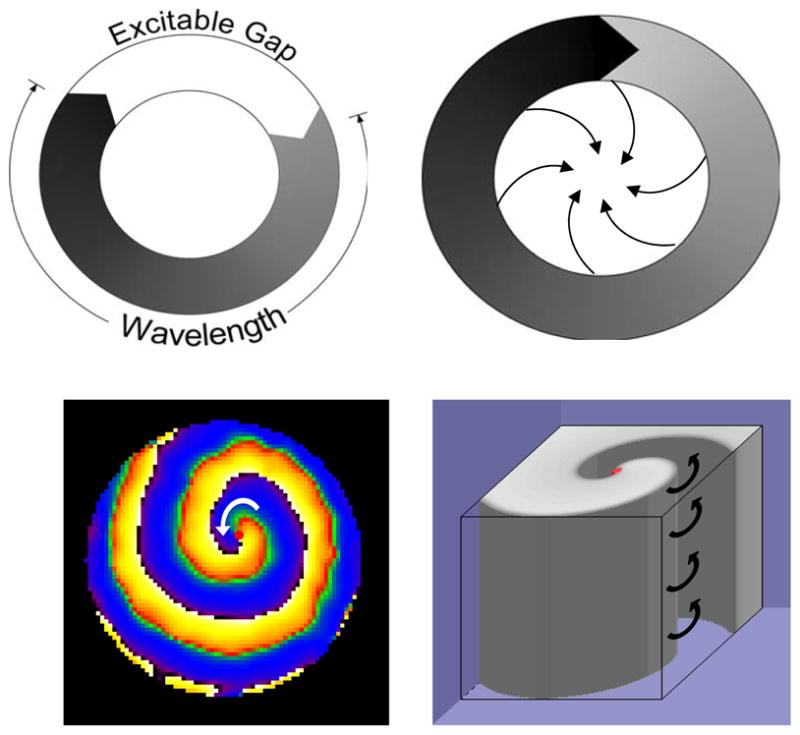Figure 1.

Four different concepts of reentry: A. Reentry around a ring-like anatomical obstacle. Successful reentry occurs when wavelength (black) is smaller than pathlength and allows for a fully excitable gap (white). B. Leading circle reentry around a functional obstacle. Partially excitable gap allows wave front to “bite” its wavetail of refractoriness. The hypothesis suggests that wavefronts invading the center result in refractoriness. C. Two-dimensional spiral wave rotates counter clockwise around an unexcited but excitable core (red dot) in a neonatal rat ventricular myocyte monolayer. D. Computer simulation of a three dimensional scroll wave rotating counter-clockwise.
